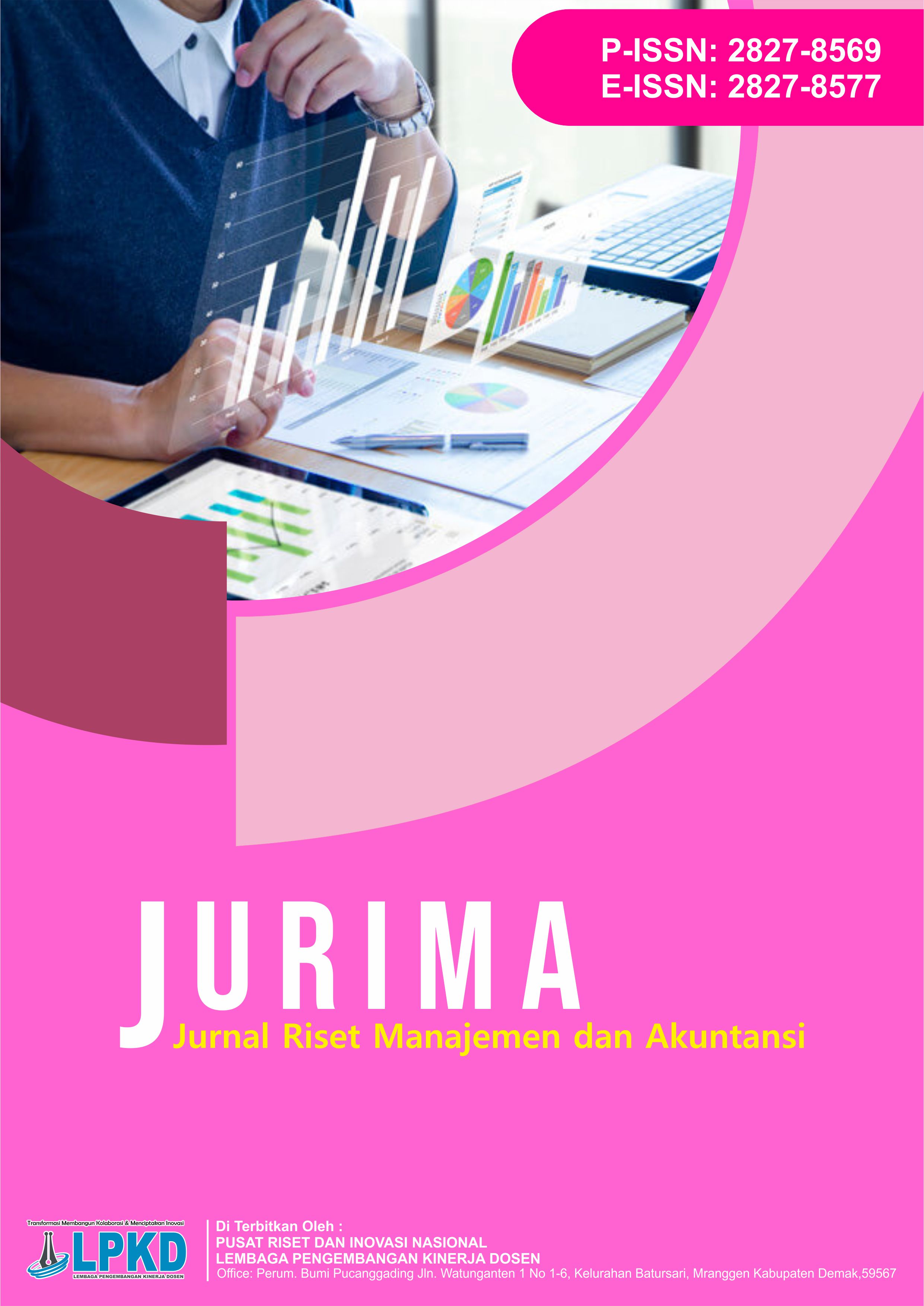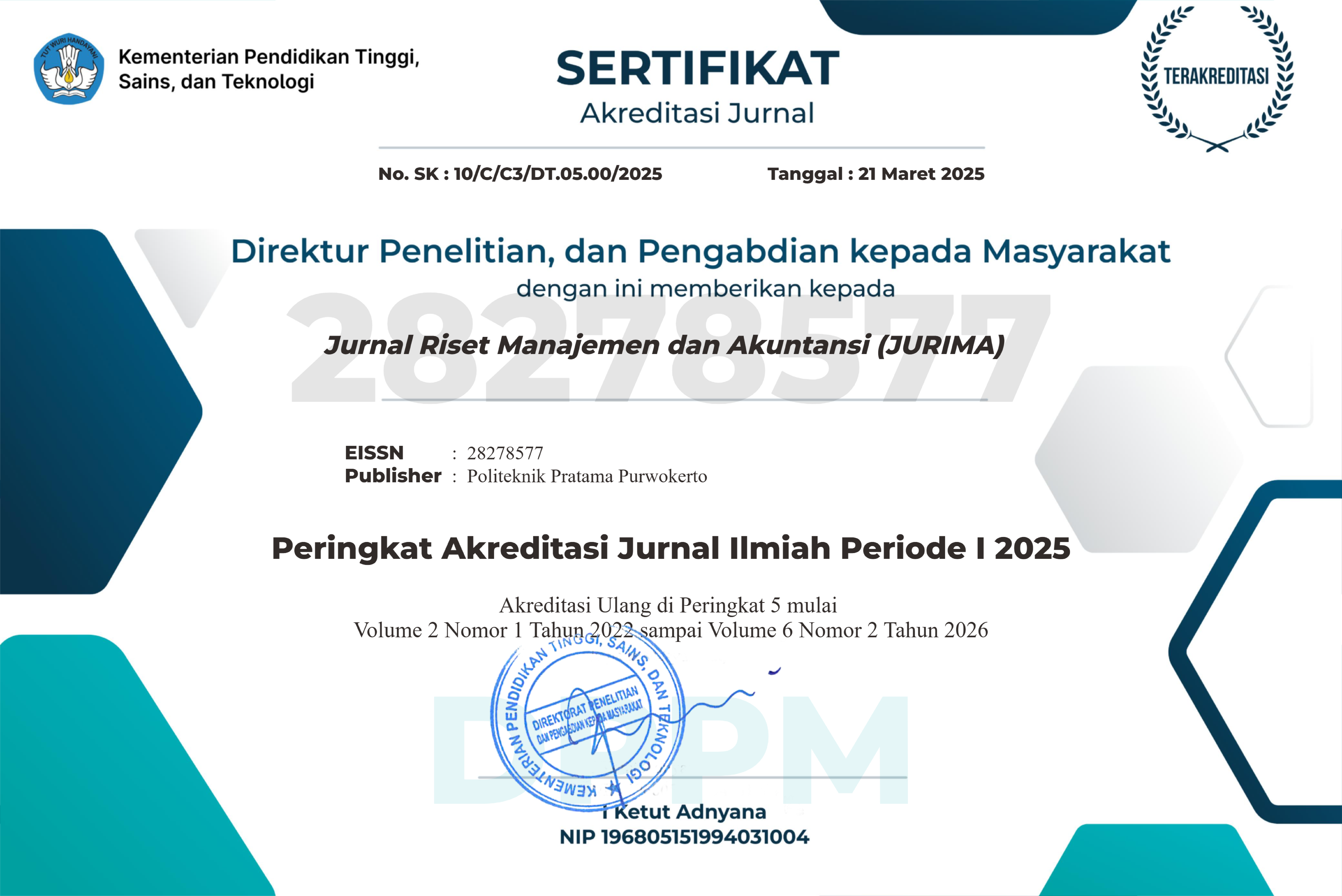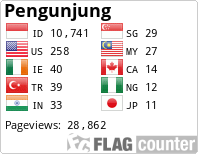Pengaruh Manajemen Sumber Daya Manusia Dan Ancaman AI Terhadap Kesenjangan Keterampilan Dasar Karyawan Di PT SUCOFINDO
DOI:
https://doi.org/10.55606/jurima.v5i1.5120Keywords:
Human Resource Management; Artificial Intelligence; Skills Gap; Digital Transformation; Adaptive Training.Abstract
The advancement of artificial intelligence (AI) has reshaped the workforce landscape, introducing new challenges in human resource management. This study aims to analyze the influence of human resource management (X1) and artificial intelligence threats (X2) on the basic skills gap (Y) of employees at PT SUCOFINDO. The research applies a quantitative method using multiple linear regression with 61 respondents selected through purposive sampling. The results show that both X1 and X2 simultaneously have a significant effect on Y (p = 0.000), but only X2 has a partial significant influence (p = 0.000; coefficient = 0.586), while X1 is not significant (p = 0.986). These findings indicate that perceived AI threats play a major role in widening the basic skills gap. On the other hand, current HR practices are ineffective in addressing the issue. The implication of this study emphasizes the need for data-driven HR strategies and adaptive training programs to reduce the skills gap and prepare employees for digital transformation.
Downloads
References
Albrecht, S. L., Bakker, A. B., Gruman, J. A., Macey, W. H., & Saks, A. M. (2021). Employee engagement, human resource management practices and competitive advantage: An integrated approach. Journal of Organizational Effectiveness: People and Performance, 8(1), 124–142. https://doi.org/10.1108/JOEPP-10-2020-0203
Boxall, P., Guthrie, J. P., & Paauwe, J. (2020). Human resource management: Scope, analysis, and significance. Oxford University Press.
Brougham, D., & Haar, J. (2021). Artificial intelligence and job anxiety: A systematic review and conceptual framework. Journal of Business Research, 131, 614–625. https://doi.org/10.1016/j.jbusres.2020.11.069
Chain, P. (1997). Same or Different?: A Comparison of the Beliefs Australian and Chinese University Students Hold about Learning’s Proceedings of AARE Conference. Swinburne University. Available at: http://www.swin.edu.au/aare/97pap/CHAN97058.html
Huang, M.-H., & Rust, R. T. (2021). A strategic framework for artificial intelligence in marketing. Journal of the Academy of Marketing Science, 49(1), 30–50. https://doi.org/10.1007/s11747-020-00749-9
Kotler, P., & Lee, N. R. (2009). Up and out of poverty: The social marketing solution. Pearson Education, Inc.
LPPSP. (2023). Statistik Ketenagakerjaan Indonesia 2023. Badan Pusat Statistik. Diakses dari https://www.lpps.go.id/publikasi/ketenagakerjaan-2023
Norsyaheera, A. W., Lailatul, F. A. H., Shahid, S. A. M., & Maon, S. N. (2016). The relationship between marketing mix and customer loyalty in hijab industry: The mediating effect of customer satisfaction. Procedia Economics and Finance, 37, 366–371. https://doi.org/10.1016/S2212-5671(16)30138-1
OECD. (2021). The future of work: Skills and resilience for a world in transition. OECD Publishing. https://doi.org/10.1787/9789264908293-en
Prasetyo, A. D., & Suryani, T. (2022). Dampak transformasi digital pada kesenjangan keterampilan di sektor jasa Indonesia: Studi kasus perusahaan inspeksi. Jurnal Manajemen Teknologi, 21(1), 45–60. https://doi.org/10.15294/jmt.v21i1.56789
Risdwiyanto, A. (2016). Tas kresek berbayar, ubah perilaku belanja? Kedaulatan Rakyat, 22 Februari, 12.
StatSoft, Inc. (1997). Electronic statistic textbook. StatSoft Online. Available at: http://www.statsoft.com/textbook/stathome.html
Sutrisno, E. (2021). Manajemen sumber daya manusia. Prenadamedia Group.
Susanto, H., & Handayani, L. (2023). Analisis kesiapan sumber daya manusia menghadapi disrupsi teknologi di sektor jasa. Jurnal Sains dan Teknologi Indonesia, 5(2), 105–117.
Utami, D. S., & Wardani, I. A. (2022). Strategi pelatihan digital untuk meningkatkan keterampilan karyawan di era AI. Jurnal Inovasi Teknologi dan Manajemen, 10(3), 214–227.
Wahyudi, H. (2020). Adaptasi organisasi dalam era industri 4.0: Studi kasus perusahaan jasa. Jurnal Ilmu Administrasi Bisnis, 8(1), 56–65.
Wibowo, R., & Fitriani, L. (2021). Strategi manajemen SDM dalam menghadapi disrupsi teknologi: Analisis pada perusahaan sertifikasi di Jawa Barat. Jurnal Bisnis dan Kewirausahaan, 17(2), 112–125.
World Economic Forum. (2023). The global risks report 2023 (18th ed.). https://www.weforum.org/reports/global-risks-report-2023
Yuliana, N., & Ramadhan, A. P. (2022). Digitalisasi dan implikasinya terhadap kompetensi tenaga kerja Indonesia. Prosiding Seminar Nasional Teknologi Informasi dan Komunikasi, 4(1), 89–98.
Zulfikar, A., & Pramono, D. (2021). Evaluasi efektivitas pelatihan berbasis teknologi di perusahaan sektor publik. Jurnal Administrasi Publik, 15(4), 202–215.
Downloads
Published
How to Cite
Issue
Section
License
Copyright (c) 2025 Jurnal Riset Manajemen dan Akuntansi

This work is licensed under a Creative Commons Attribution-ShareAlike 4.0 International License.










